AboutMore
Brief History
The School of Journalism and Communication at The Chinese University of Hong Kong celebrated its 50th anniversary in 2015. Started as a two-year programme with only two professors and six students, the School now boasts more than 30 full-time faculty members, 60 part-time lecturers, and more than 800 undergraduate and postgraduate students. Spanning over half a century, different people, events and feelings have interwoven as our precious memory. Looking through the lens of the historical development of the School, we can simultaneously witness the social change in Hong Kong.
Six Developmental Stages Started from the US Blueprint
Six distinct periods have characterized the School from 1965 to 2015. The first period was the founding stage in the 1960s, when economist Chang Pi-kai was asked to serve as the Head of the Department. Chang recruited Michael Wei, who graduated from the United States. There was a nickname created by colleagues in New Asia College for this partnership: “a master and a soldier.” The establishment of the Department of Journalism at CUHK marked the milestone for the beginning of journalism education in Hong Kong. The earliest alumni can still recall how the local Chinese newspaper industry gave a strong impetus to this educational initiative, concurrently with the support of the American academia, such as the earliest programme designer Frederick Yu from Columbia University.
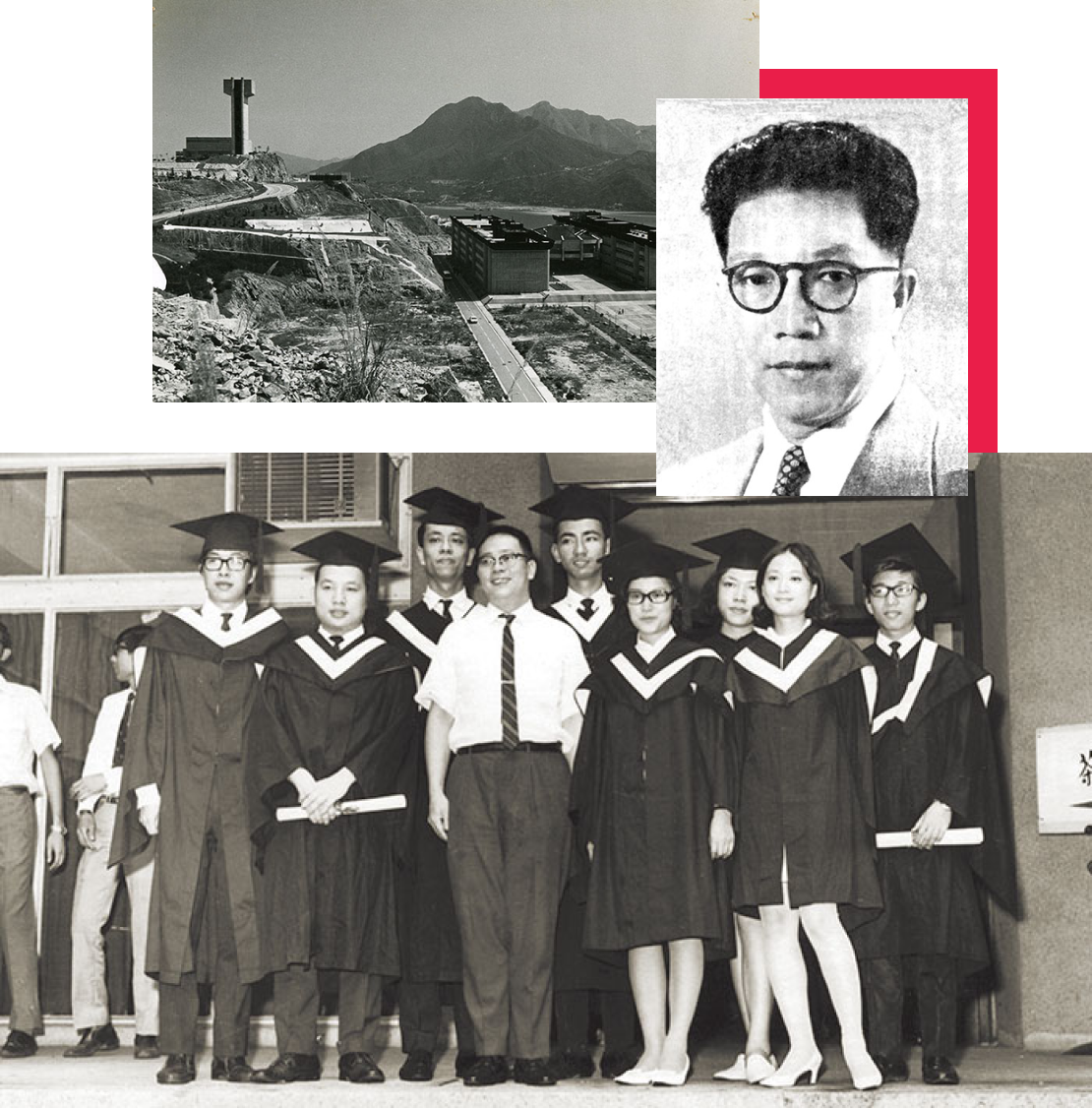
After Yu’s initial stay, Wei who graduated from the University of Missouri then served as the Department Head. Benefited from the journalism education traditions of Columbia University and the University of Missouri, the two scholars paved way for the development of the Department of Journalism at CUHK. Backed then, New Asia College was yet to inaugurate at the Shatin campus. Hence teachers and students alike pursued their studies in places such as the Mencius Library on Boundary Street in Kowloon.
The second period was the moulding stage in the 1970s. The scale of the Department expanded slightly with the extension of the two-year programme into a four-year one. The Department also took opportunity to include a communication curriculum, which explained the renaming to the Department of Journalism and Communication. The Department’s offices were originally located in both New Asia College and Pi Ch’iu Building in the central campus. In later stage, the Department relocated all the offices to New Asia College. Timothy Yu was head-hunted from the Hong Kong Baptist College to The Chinese University of Hong Kong to become the Chair Professor and Head of Department. Since then, Leonard Chu, Huangfu Ho Wang and Chin-Chuan Lee were newly employed by the Department. Yu also invited the modern founding father of Communication Wilbur Schramm to Hong Kong to help develop the M.Phil. programme in Communication. This programme served as a cradle for nurturing local teaching and research talents in the field of journalism and communication.
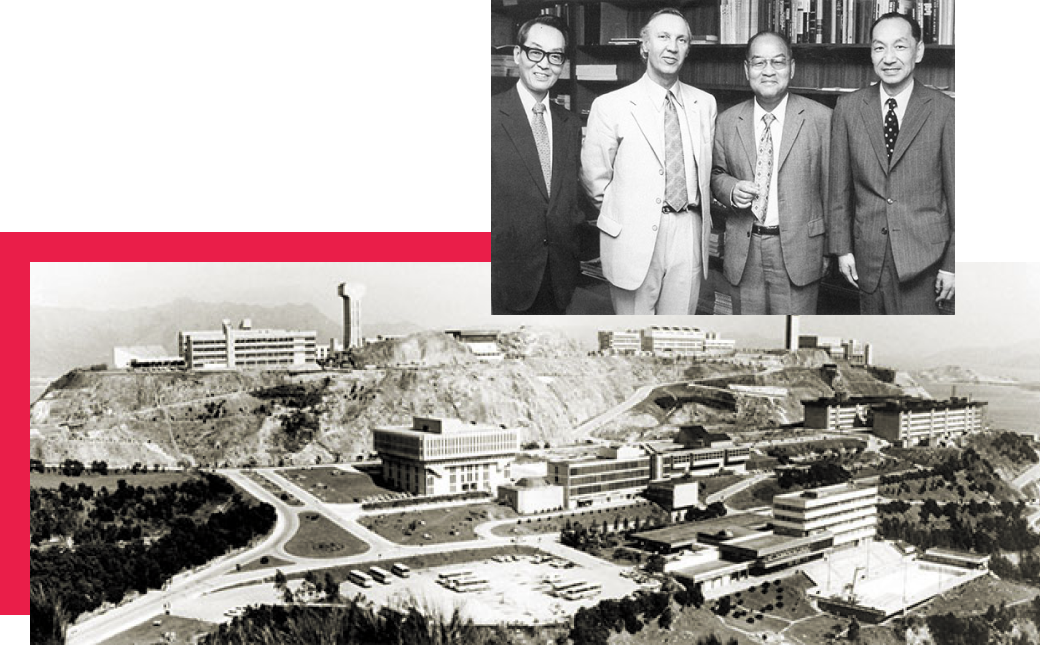
The sensational Shatin News Incident took place in the mid-1970s. Hong Kong newspapers reprinted an exclusive story by the Department’s student newspaper Shatin News. The article reported that CUHK graduates failed to land the Government’s Administrative Officer position. The University’s senior management was highly concerned and the Senate eventually condemned four teachers in the Department, leading to the non-renewal of their employment contracts. Shatin News even ceased publication and abounded with gossips. In view of this incident, some students came together and produced their own investigation report.
Turbulent Hong Kong Stabilized before the Handover
The third period was characterized by the instability in the 1980s. This period was closely tied to the uncertain future of Hong Kong since the start of the Sino-British Talks. Gloomy sentiment loomed over the society and the economy, leading to the depreciation of Hong Kong currency. Instability was also witnessed in the high turnover rate of teachers within the Department. Between 1982 and 1986, after the retirement of Yu, Godwin Chu from Hawaii came for only one short semester. Then the Department was entrusted to Philip Cheng and Kuan Hsin-Chi who took over the administration in succession. Eventually, Leonard Chu was appointed Head of Department to stabilize the situation. At the time, alumni Paul Lee, Joseph Chan and Clement So graduated and returned from the United States. This laid a solid foundation for the localization of teaching staff in journalism and communication education. In the early 1980s, the Department added courses in Advertising and Public Relations, yet the training was still largely rhetorical. The newly established New Shatin replaced the original Shatin News.
The June 4th Incident casted a long shadow over Hong Kong’s development in the 1990s. In the fourth period of stabilization, the first half of it witnessed emigration of teachers from the Department. George Comstock, renowned communication professor from the US, was invited to lead the Department. He recruited a few American teachers and set up the Ph.D. Programme in Communication. After a short stay of two years, Comstock returned to the US. In the mid-1990s, the University changed its curriculum from a four-year undergraduate programme to a three-year one, giving rise to an immense growth of teachers and students. Local Hong Kong teachers then began to take charge of the Department.
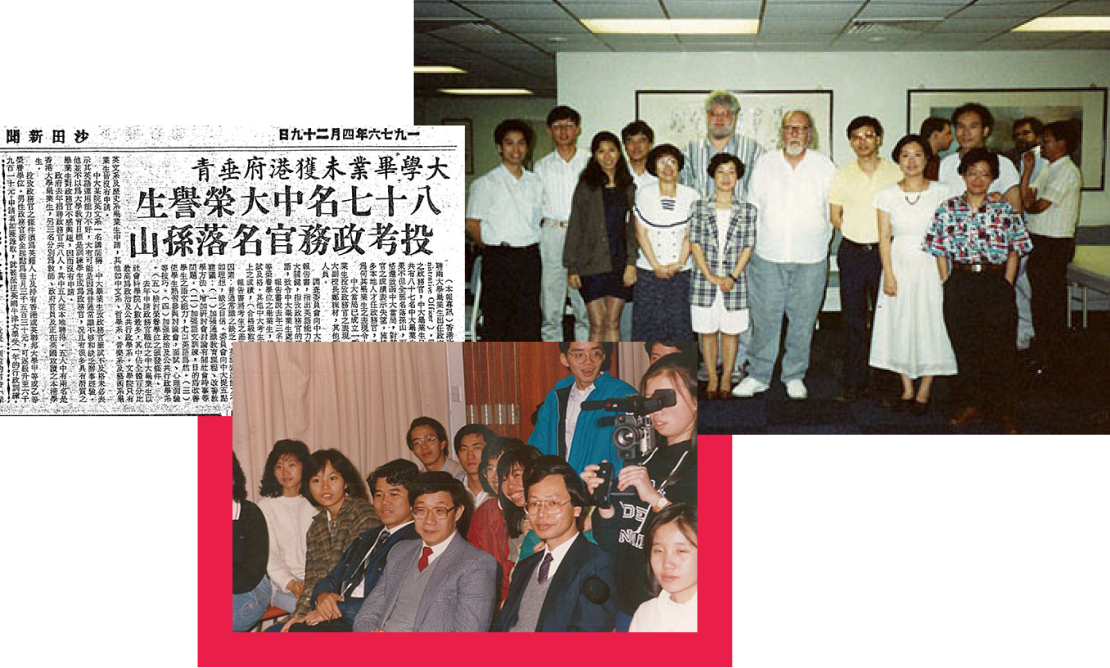
Kenneth Leung temporarily succeeded Comstock and Joseph Chan assumed the Department chairmanship. He recruited young Chinese graduates from the US such as Pan Zhongdang, Ran Wei and Chen Huailin to the Department. More local teachers were also hired after their graduation from overseas including Paul Lee, Clement So, Eric Ma, Louis Leung and Miranda Yiu. The Department was graced with having Chin-Chuan Lee to come back again as Chair Professor. Under the leadership of Chin-Chuan Lee, the second-generation Chinese scholars and third-generation local and overseas teachers joined hands to explore different research topics such as the international news coverage of Hong Kong Handover and local identity issues. The Department had plenty of young talents with growing morale, trying to reach new heights in the process.
In the mid-1990s, the English practicum magazine Varsity was founded and regional newspaper New Shatin was transformed into the UBeat magazine. In 1999, the Department was renamed as School of Journalism and Communication. The first taught Postgraduate Programme M.A. in Journalism was then established, marking an array of future developments of the School. The programme emphasized on both theory and practice. The programme also tried to strike a balance between theoretical analysis and professional skills training. Keeping the curriculum flexible is key to coping with the needs of social development and industry operation.
Expanding Postgraduate Programmes and Strengthening Academic Publications
The millennium period entered the fifth developmental stage. School Director Paul Lee was devoted to offer more taught Postgraduate Programmes. In addition to grounding in Hong Kong, more Mainland students were admitted resulting in increase of students and teachers. Many veterans from the media industry were recruited as part-time lecturers in order to strengthen ties with the communication industry. The School also established the Centre for Communication and Public Opinion Survey, which helped expand the breadth and depth of teaching and research capabilities. The School was able to expand its size and energy without new recurrent funds from the University.
The baton was passed to Clement So in the second half of the Millennium. Student exchange programmes and media relations were further strengthened. Two academic journals were set up. Faculty members were mainly locals and many of them were alumni of the School (such as younger generations including Jack Qiu and Francis Lee). Cultural diversity was further blended into this local team with mainland Chinese, Taiwanese and overseas scholars.
The 2010s marked the mature stage of the School. Anthony Fung, belonging to the fourth generation of Chinese communication scholars, assumed the position of School Director. During this period, the School was lifted to another level by creating two new practicum programmes Pinpoint and Creative Media Lab, as well as the Centre for Chinese Media and Comparative Communication Research (C-Centre). Internationalization was emphasized via the implementation of more overseas exchange programmes and study tours. The School is among the top-ranking Journalism and Communication programmes in terms of international reputation, student admission quality, and staff and student research outputs.
To Inherit, Innovate and Inspire with Humanistic Concerns
In recent years the School has redesigned its emblem. The Chinese characters for “Journalism” and “Communication” are linked with the word “people” in the middle. Annisa Lee from the design team invited alumnus Lo Ting-fai to create the idea of “journalism in people, communication for people”. The spirit of humanity and caring for society are exemplified as “writing news for people, communication for people.” The three “I’s” are highlighted as to Inherit, to Innovate, and to Inspire. Journalism and Communication teachers and students are always ready to stand up and speak out for the society!
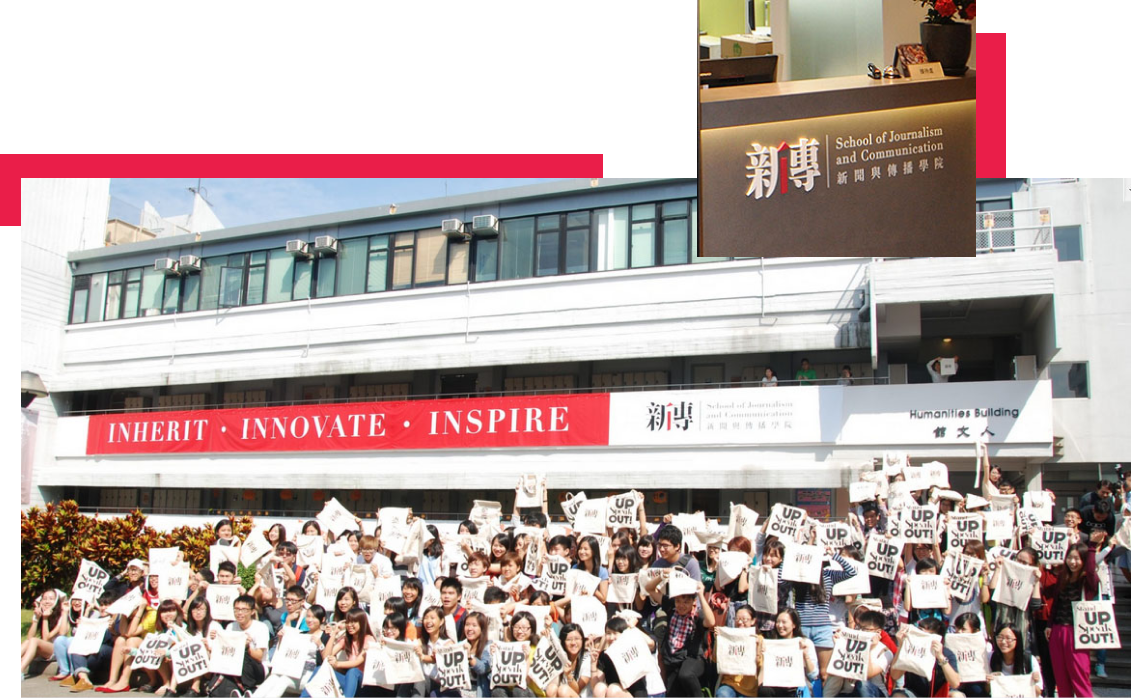
Some major personalities and events took place over the past 50 years were described above. We may all have our own memorable moments with the School. On the School’s 50th birthday, we held a series of oral history symposiums and invited alumni and colleagues to write and share about our beloved School in the form of “one alumnus, one story”.
Graduates of the Chinese University could hardly forget the people and scenery on campus, such as the Pavilion of Harmony, dubbed “the second most scenic spot in Hong Kong”. The slope of the Humanities Building rooftop was the “forbidden area” where we could stare at the glittering fishing lights in Tolo Harbour. Graduates also drew in their heart the ginseng tree planted by a staff in front of the Humanities Building. The precious moments of attending lectures by Wilbur Schramm, Michael Wei and Lu Keng were just unforgettable. A classmate recalled that then student Julian Lee published a campus tabloid magazine out of his own pocket. It was just a prelude to Lee’s eventual joining of City Magazine. Many Chinese University graduates from different generations heard or met “CUHK weird granny”, and a few might even had “close encounters of the third kind” with her.
Shared Memories of People, Sceneries and Events
The bittersweet taste of school life was our collective memory. Students were chased by vicious dogs when delivering New Shatin in the nearby villages. A cohort of first-year students once refused to deliver the newspaper and initiated a strike that had to be settled by the Department Head. UBeat reporters had chances to interview celebrities such as the Donald Tsang brothers, Regina Ip, Jimmy Lai, Stephen Chow and Nicholas Tse, as well as remembering different stories from Varsity and Pinpoint Advertising Agency. The “Journalism four golden flowers” extended the students’ publications to the online platform and in video mode. All these were amusing for our alumni to reminisce about.
Developing films in the darkroom, pleading with classmates for hand copying hundreds of pages of a graduation thesis, and stories of summer internship in the third year all embedded deep in the graduates’ minds. The homework from Eric Ma’s class was compiled into a popular book right at the end of the semester. Ma also asked postgraduate students to sleep in a garbage bag at a corner of the campus in the middle of the night and write their own obituaries. How could the chief of a TV news station who returned to campus as a postgraduate student forget the lingering melodious music put on by Joseph Chan before his weekly lectures? Mainland students came to Hong Kong for research postgraduate programmes spent a few years in the Humanities Building. The joy of learning interwoven with the difficulty of research constituted their unforgettable memories.
There have been many activities in our memorable school lives. In the 1970s, journalism students already started their own informal course evaluation to assess teachers’ class performance. Our students had a record-breaking seven consecutive wins in the annual inter-departmental mixed choir contest in New Asia College. The relish of sweet soup cooked “illegally” in the Computer Lab and feasting over a table of sizzling hot pot on the “Humanities Bridge” are what we chatter about even today. The Big Character Posters on the wall of New Asia Amphitheatre might be gone, but students went on to produce documentaries on their own initiatives and publish a photo album after reporting on the Taiwan Presidential election. In recent years journalism students were seen on the frontline, like filing reports on the stabbing incident of Kevin Lau and the Occupy Movement. Their images were used by foreign news media, and their reports won numerous news awards.
Individuals cherished fragments of memories about the bygone era. Moonlighting with an astonishing number of part-time jobs was not uncommon among students of the 1960s. Those classmates were nostalgic about the days living in the dormitory above Mencius Library. Some bold yet cautious ones that had a sudden crave for afternoon tea just left abruptly in the middle of a class, but returned from the student canteen promptly afterwards before the class ended. The eager matchmaking Department Head tried but failed to produce a cross-Strait couple. A fellow alumna who was also a part-time lecturer comforted a lovelorn junior student by sharing her own personal love story. During the years in the School, many “Journal Guys” formed friendships that last for a lifetime.
Past Footsteps and Present Expeditions Revisited
We witnessed the years of glory and the bonds of kindred spirits. As members of the Journalism family, the staff also had their shares of interesting moments. A colleague recalled the squeaking sound of the rodents drawn by the leftover food from the students in the computer lab while running in the air conditioning duct. The ever-improving communication technologies sent typesetting machines and darkrooms into history, and old jobs and personnel were replaced. The complete set of old Hong Kong newspapers from 1989 were turning yellow and occupying a lot of space, and luckily the School was able to find them an ideal home. Occasionally there were incidents of theft on campus largely perpetrated by outsiders. Students regarded the School as home and left their belongings lying around carelessly. But this behavior could be seen as an indication of their faith and love towards the School.
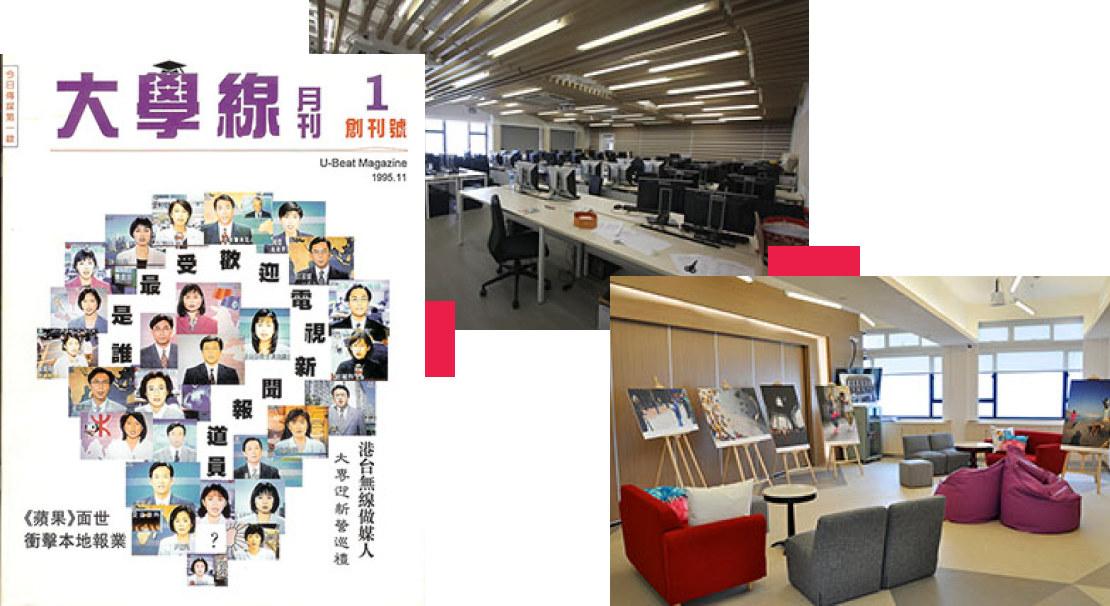
A professor was once mistaken for a janitor by a postgraduate student who proceeded to assign the professor a photocopying task. A young and baby-faced teacher was treated as a postgraduate student. There were strange encounters experienced by the staff of the Centre for Communication and Public Opinion Survey during telephone interviews. Cultural differences between Hong Kong and Mainland China could be reflected by the gift-giving practices of the mainland students. They were hardworking and frugal in the early years but in recent years there is a growing trend of giving presents. Some colleagues were once presented with some Cordyceps sinensis or giant Ginseng worth over HKD$10,000. Others recalled being gifted a necklace of big pearls, the size of a two-cent coin, from a student and the parents. Firm refusal from the School’s colleagues could not deter the enthusiastic givers and the staff had to decline again on another pearl gift somewhat downgraded from the original one.
The same night when Ricky Wong’s free-to-air TV licence bid was rejected, he still insisted to come to New Asia Amphitheatre as originally scheduled to share his thoughts. The overwhelming turnout became all participants’ collective memories. Donna Chu gathered colleagues and alumni to produce her own feature film Vintage. Writing science fictions in her spare time aside from publishing academic articles, she is multi-talented and fun-loving. The famous C-Kitchen and the brilliant Journalism tennis team have enriched the colleagues’ campus life. German teacher Saskia Witterborn also had her unforgettable moment in Hong Kong when she accidently ate a piece of chicken’s feet but failed to “release” it immediately from her mouth.
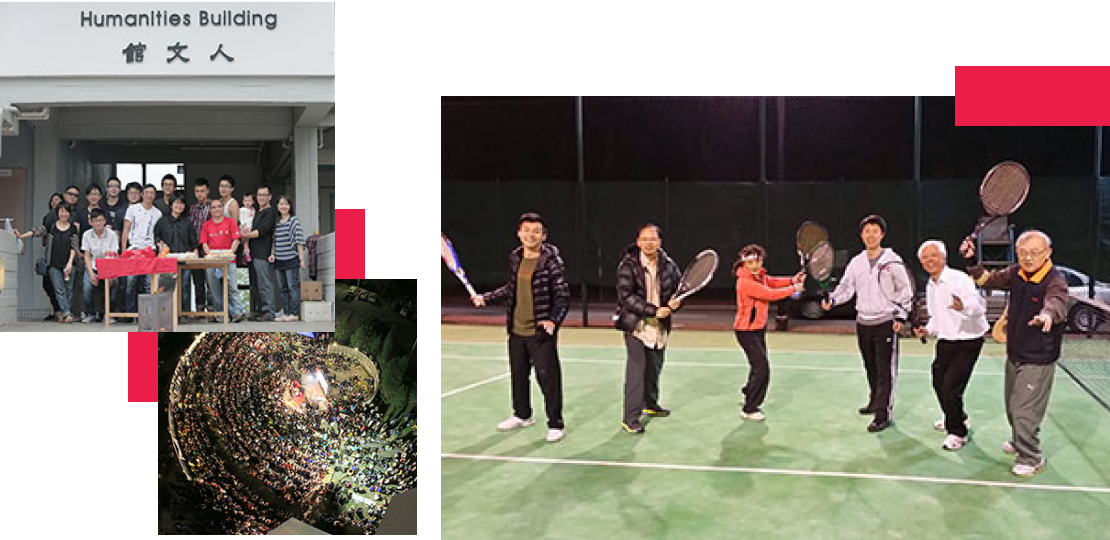
Glorious History Revealed in the 50th Anniversary Publication
The title of this article is “A Brief History of School of Journalism and Communication”. In fact this is only an ultra-condensed version of people and events. Much more details were revealed in the 50th Anniversary Special Publication. The names of more than 5,400 graduates and the current staff were printed on the inside front and back covers of the Special Publication.
For half a century, alumni made their ways in the world and came through with flying colours in different fields and professions. The School is about to embark on another journey of 50 years. We are looking forward to a spectacular decade ahead. On her diamond jubilee, we can all reminisce about the good old times once again.
Clement So
Professor, School of Journalism and Communication
The Chinese University of Hong Kong
(Originally written in Chinese and published in Ming Pao Daily News on 31 October, 2015. Translated by Kwong Sum Yin and with input from Christine Choy.)
